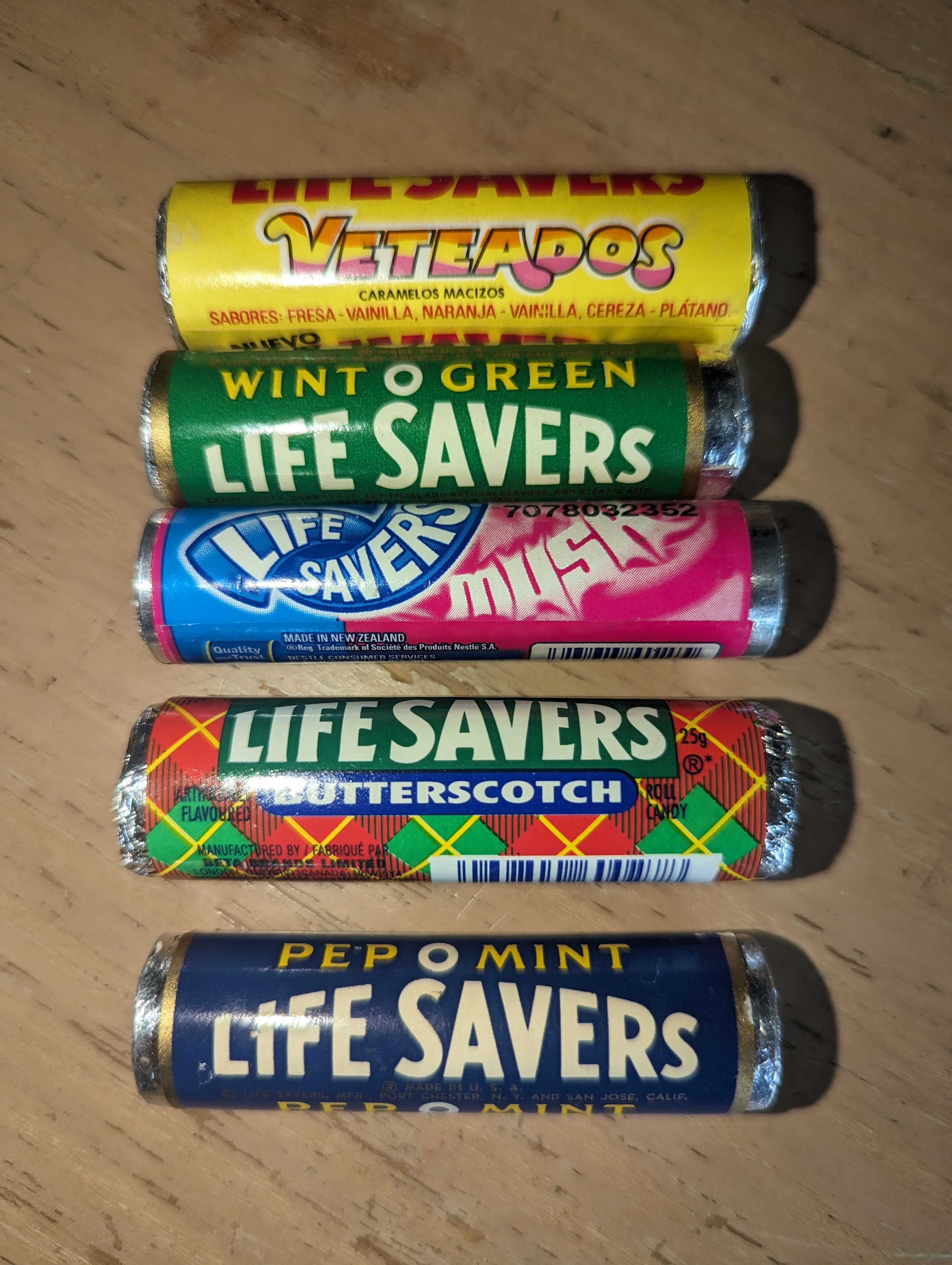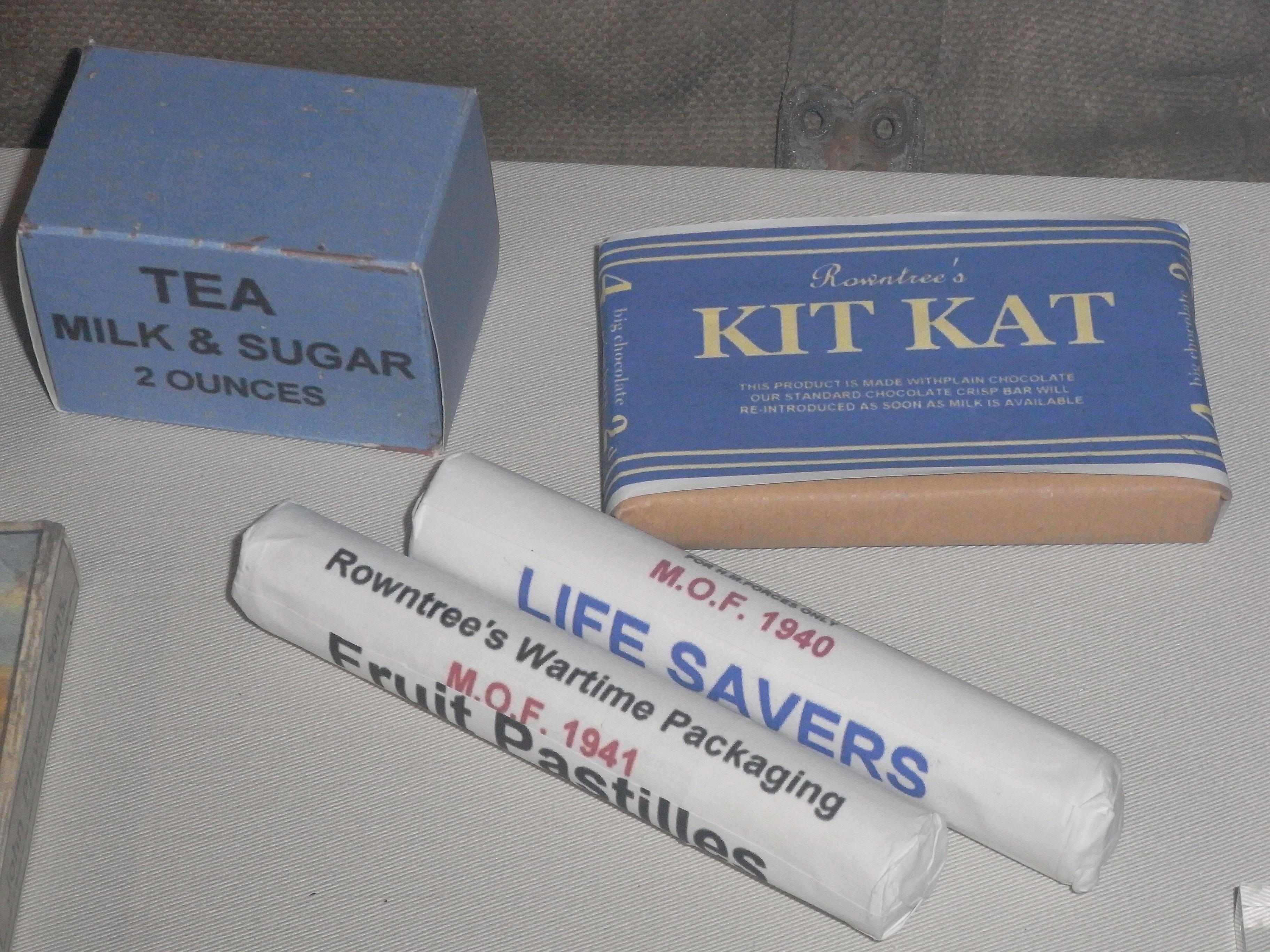 On my personal Facebook site, I have a album called "AI is Not Taking the World Over (Yet)". It emphasizes the current state of AI, often with comical results. This article describes the Google Translate results for this article, Breve Historia de los Dulces Salvavidas™️, the latter being the Spanish term for Life Savers™️. My business recommendation on AI translation--in the words of Geena Davis's character in The Fly: "Be afraid. Be very afraid."
On my personal Facebook site, I have a album called "AI is Not Taking the World Over (Yet)". It emphasizes the current state of AI, often with comical results. This article describes the Google Translate results for this article, Breve Historia de los Dulces Salvavidas™️, the latter being the Spanish term for Life Savers™️. My business recommendation on AI translation--in the words of Geena Davis's character in The Fly: "Be afraid. Be very afraid."
The top roll of Life Savers is Mexican, "Veteados," which means swirled. The article I read was intended to help me understand the background of this roll in my collection.
If you know me, then you'd know that I have taken 2 years of high school Spanish (40 odd years ago) and have spent the last 3 years learning Spanish on Duolingo (interspersed with Portuguese and Japanese). Which begs the question, "Why couldn't you read the article?" I could, at about a 70% level. But I was hoping there might be something interesting and useful in it, so I took the extra step of putting the article through Google Translate this evening, hoping to up my clarity to a 95% level.
When I started reading the translation, I laughed until I cried. The same reaction I've had when looking at CakeWrecks.com.
⭕

This was news to me, because I was unaware that there was an urban legend about Crane's daughter. Nor that the hole in the Life Savers obeys its different origins.
But it's always possible that there have been very many people that have been as asphyxiated by being attracted with a caramel.
⭕

Good to know. Continued breathing = good ✔️
In this case, 2 options are provided. Both of which are equally useless, of course, but it's nice to have choices.
[I think you've probably already put 2 + 2 together and determined that the theoretical asphyxiation was avoided by the hole in the Life Saver.]
⭕

Whether a story is true or false is clearly irrelevant when publicity is required! A little jaded, perhaps...
⭕

Okay, I'm being a little picky on this one. We all know that maple and honey are 2 different products, but they're fairly close, both sweet, both brown, or marron in Spanish. Moving along.
⭕

It is unclear whether the shortfall was in the jaws or in the teeth. Either way, those Life Savers needed to be placed in the packages only in the winter. Comprende?
⭕

This one's probably another low blow...I can understand what it meant. But I can't help but imagine machines...or medical pills...or rolls of candy being placed on the boats as a safety precaution. Or thrown out to those who are overboard. 🛟
⭕

 I actually don't know what they mean about the biggest package...since all Life Savers rolls are roughly the same size. But the largest ones I know about happen to be at the former Life Savers production plant in Port Chester, New York, US.
I actually don't know what they mean about the biggest package...since all Life Savers rolls are roughly the same size. But the largest ones I know about happen to be at the former Life Savers production plant in Port Chester, New York, US.
Pep⭕Mint - above (Library of Congress)
5-Flavors - https://www.loc.gov/resource/mrg.04567/
Orange - https://gorillasdontblog.blogspot.com/2017/05/life-savers-building-port-charles-ny.html?m=1
Wild Cherry -https://gorillasdontblog.blogspot.com/2017/05/life-savers-building-port-charles-ny.html?m=1
Source: Library of Congress, Prints & Photographs Division, photograph by John Margolies, [reproduction number, e.g., LC-MA05-1], retrieved from https://www.loc.gov/resource/mrg.04563/?st=image
Now, the ingredients really were lost in the translation. I seriously doubt blueberry is an ingredient in every flavor. Especially the Pep⭕Mint. More importantly, if you, like I, were brought up on Hank Williams' Jambalaya, the lyrics,
"pick guitar, fill fruit jar and be..."
might be running through your mind at this point. In which case I don't want fruit jar in the ingredients. Yeah. NO!
⭕

Mexican did participate in World War II. I'm not sure what this has to do with Life Savers, if anything, but I guess we'll just go along with it. If they did get Salvavidas rations, perhaps they looked something like these generic-looking sweets enjoyed by the Brits:


Sources:
"World War II Rations, Sweets and Chocolates," National Education Network, download available via
http://gallery.nen.gov.uk/asset656790_13904-.html
Cyethansami, "British foods in 1940s, exhibit - Hong Kong Museum of Coastal Defence," HKMCD, Shau Kei Wan, Hong Kong, 18 April 2012; used under the Creative CommonsAttribution-Share Alike 3.0 Unported.
⭕

A company of sweethearts...clearly in 2004 Wrigley's must have been on Fortune's "Top 100 Best Companies to work in America." Or, we could use the Italian translation, that they were a company of "empaqueted" sweets. Whatever they are.
⭕

The last couple sentences really sum up the whole matter. Because if you don't have anything, you're not safe. Or not saved. Or something. But bear in mind, if you do have something you're probably safe!
See also
The real article on Mexican Life Savers
http://www.valutivity.com/index.php/research/293-the-real-article-about-mexican-life-savers
©️ 2024 to present.
Use of Life Savers™️ is a trademarked name, held by the current holder of the product (which has varied through the years).
All pictures are ©️ by Karen Smith-Will and may not be used without written permission.

